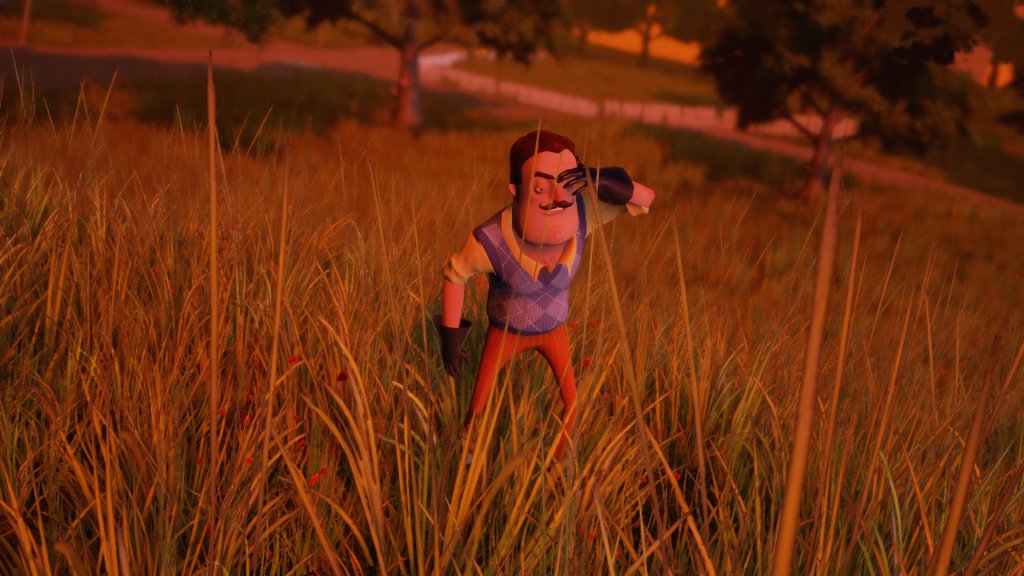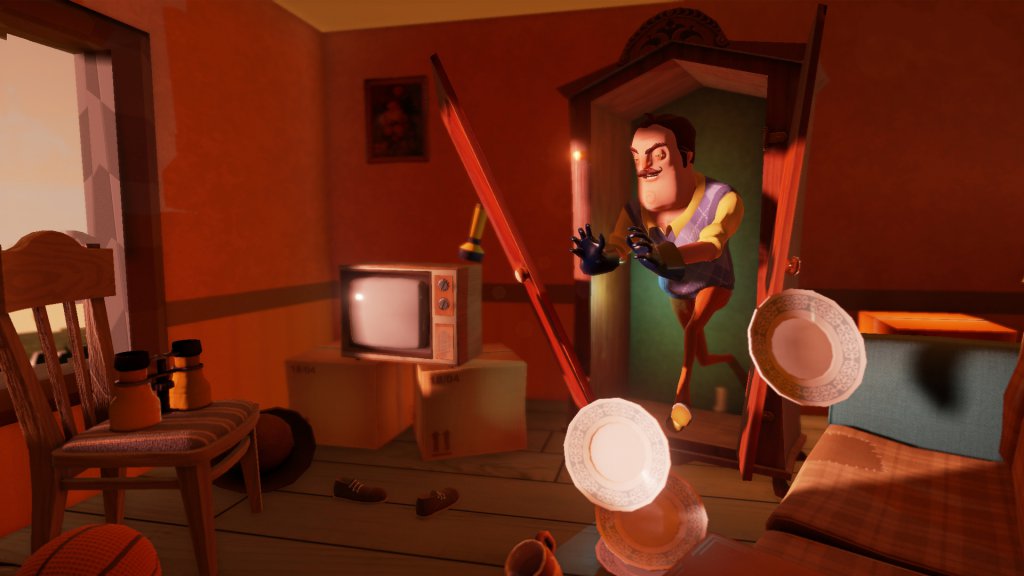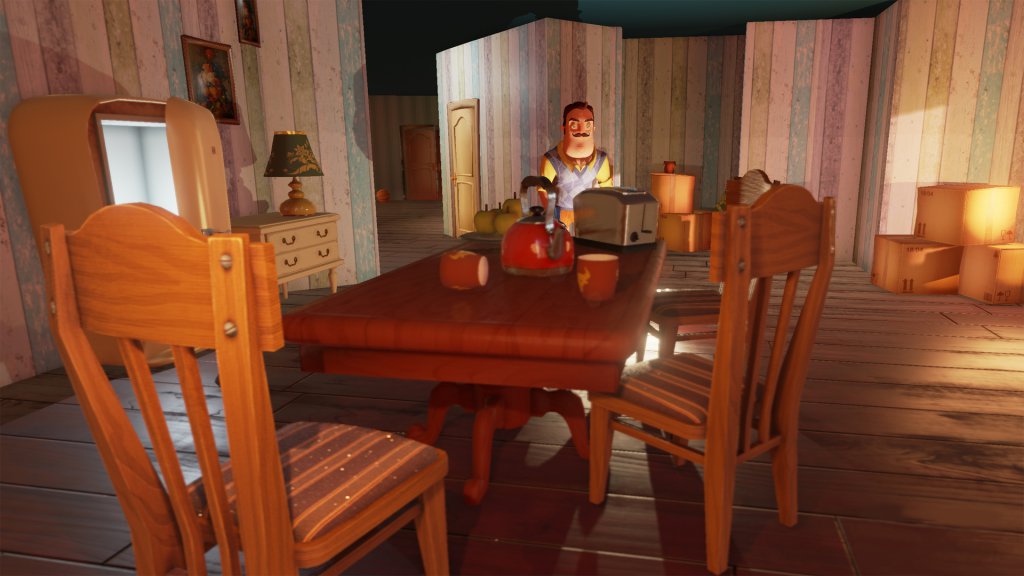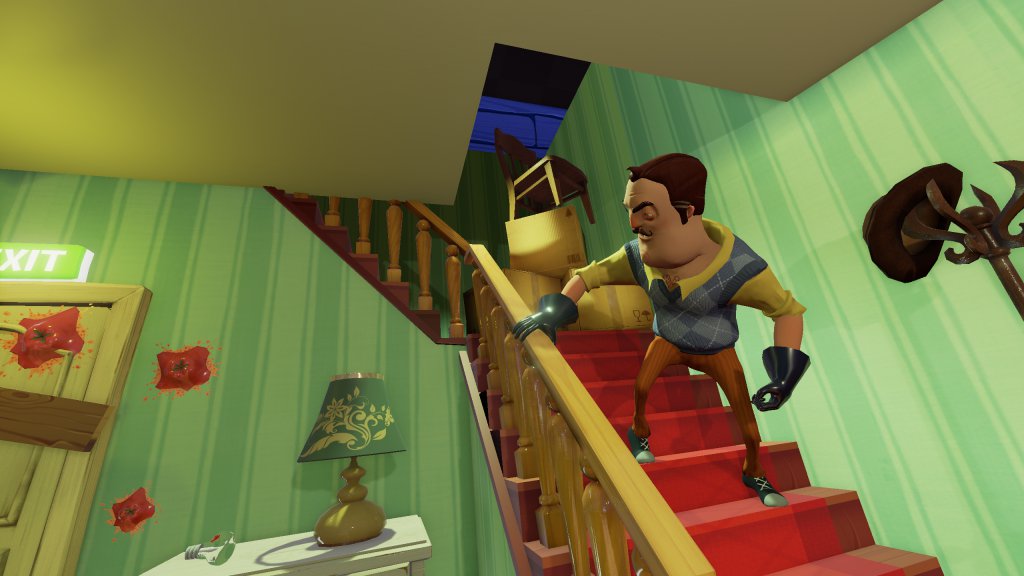Review | Hello Neighbor
Hello Neighbor had a fantastic pitch: the player is new to the neighbourhood, their neighbour is hiding something in their house, and you must sneak through their house and find out what it is. The game was designed to fuse together Hitchcock-style atmospheric tension and an AI opponent which learned and adapted based on your actions — if you keep coming in through the windows, they’ll be boarded up next time.
That pitch, true in the late 2016 Kickstarter, remained core to the game as it was picked up by TinyBuild, however something was lost along the way. Something likely stemming from the biggest threat the game had to contend with — the layout of the neighbour’s house vs. the game’s puzzle elements.
Hello Neighbor, in its purest form, is a puzzle game like a point-and-click adventure, with different items and objects from different rooms solving various obstacles that block your path to the basement. The issue isn’t down to the fact that puzzle-solving and being chased by a crazy person are a rough combination — that’s an issue which can be dismissed by the fact that you can employ stealth and distractions to afford yourself more time. It’s that the puzzles feel somewhat arbitrary in the final product.
I say final product because the game spent a long time in extended alphas, with about 85% of the final ‘rooms’ (and as such puzzle and combination objects) added into the game while it was in open development. Solving Broken Sword and Gabriel Knight levels of puzzles in real-time is fine, but if you’d even caught a glimpse of the game during the time the alpha had been rampaging over YouTube and Twitch — in the way that TinyBuild games do — then you’ve likely already had the strangeness of some of the puzzles spoiled for you.
I say strangeness. It is more that certain puzzles, the ones I eluded to as combination-based, are based off of things like elemental properties: put an object in a freezer and it takes on a cold attribute, which lets it freeze something in another room. It’s things like this which have possibly been spoiled by the successful exposure the game had in the run-up to launch — something which isn’t a problem for many games, but certainly wouldn’t suit puzzle games, or games with puzzle elements.
There is a major redeeming factor in that the neighbour AI is competent at blocking up the route around the larger houses as you fail, alerting them. It results in situations where, for instance, you see a room and know you need to find the room with the freezer, but as you’ve not fully explored the house you don’t know where that is, and even if you do, the altered route may leave you trying to find routes through unexplored areas as to avoid the neighbour.
That said, Hello Neighbor‘s antagonist moves fast — too fast — and after a dozen or so deaths it’s easily learned that it’s better to use your time on the run to scout out the rest of the house at speed as opposed to escaping the neighbour. Similar to >Observer_, another 2017 game and one which also had some pursuit and evasion moments, once the game has killed you and you’ve learnt the brunt of the consequences, there’s no fear in the pursuit anymore.
Some variety comes with the game’s three, consecutive houses, each larger than the last. With that comes new rooms and puzzles, and more windows to throw things at and through. But, by the time I reached the point where I was double-jumping and gliding along I was wondering why exactly I had bothered coming to the house — what all my multiple defeats had been in aid of. The AI’s learning and malleability was impressive, and I hope the developers continue to refine that and use it in future games — but hopefully those games will be built with more purpose and structure.
When I describe Hello Neighbor to people in future, I will talk about it as it is. A hybrid of two experiments: a burglary sandbox and a point-and-click game with a hundred obtainable items and a pushy, roaming guard.
That said, there is still some hope for the game. It has received multiple updates in the time since launch and although some forgivable physics issues exist (as well as a missing asset or two), a simple tutorial or very vague objectives system could easily give structure and clarity where there is none.
*All images are from the TinyBuild, Hello Neighbor press kit.




Comments are closed.